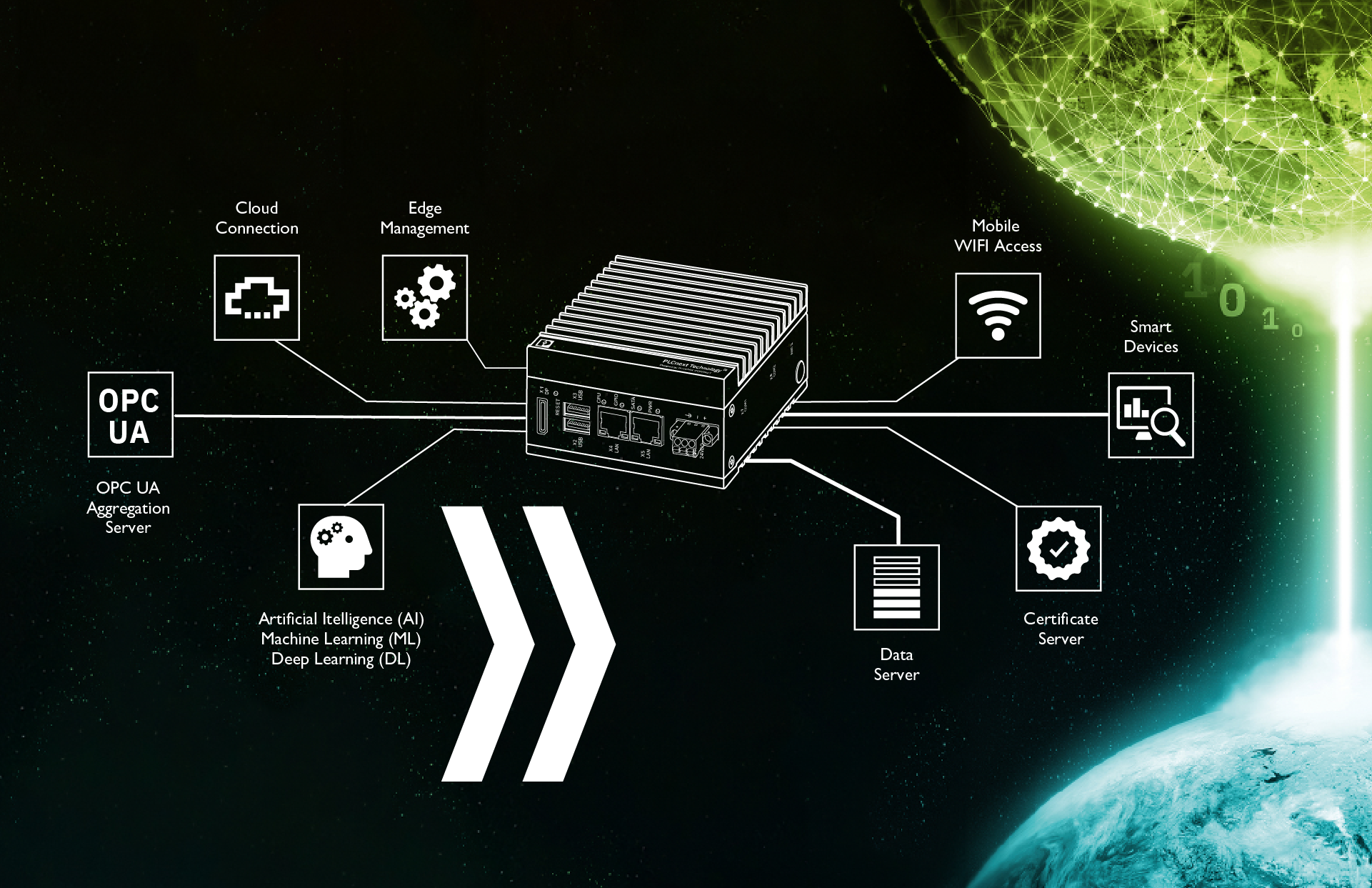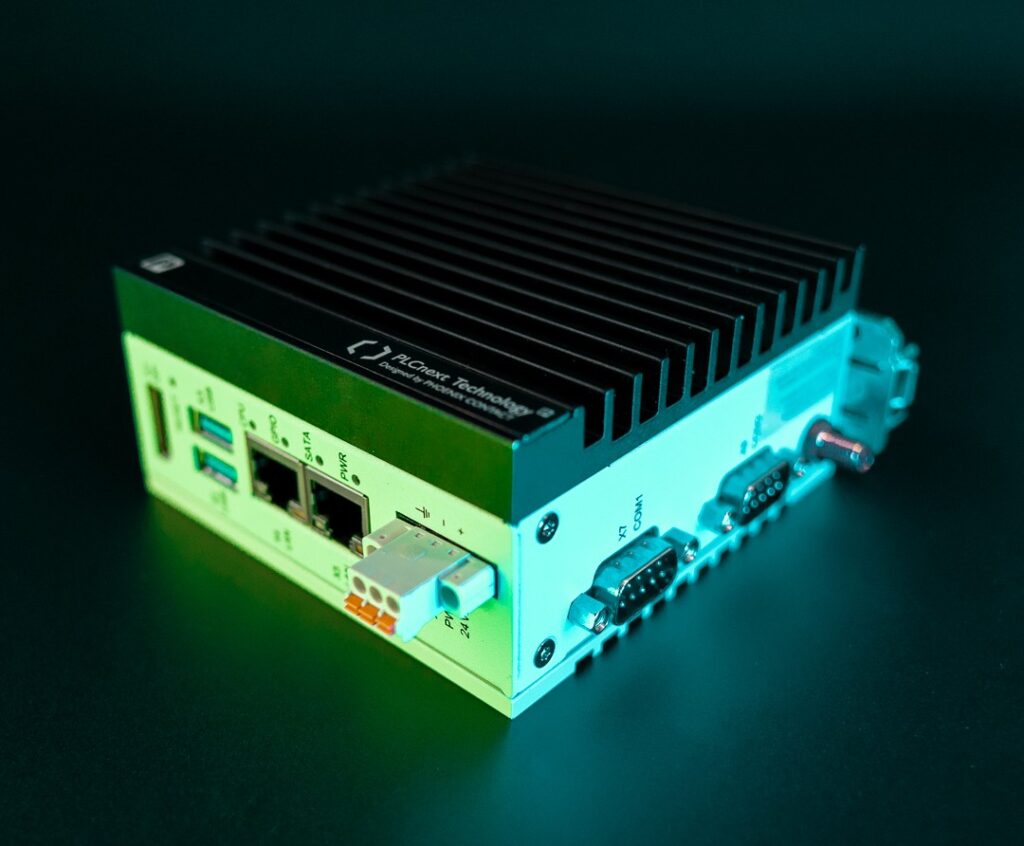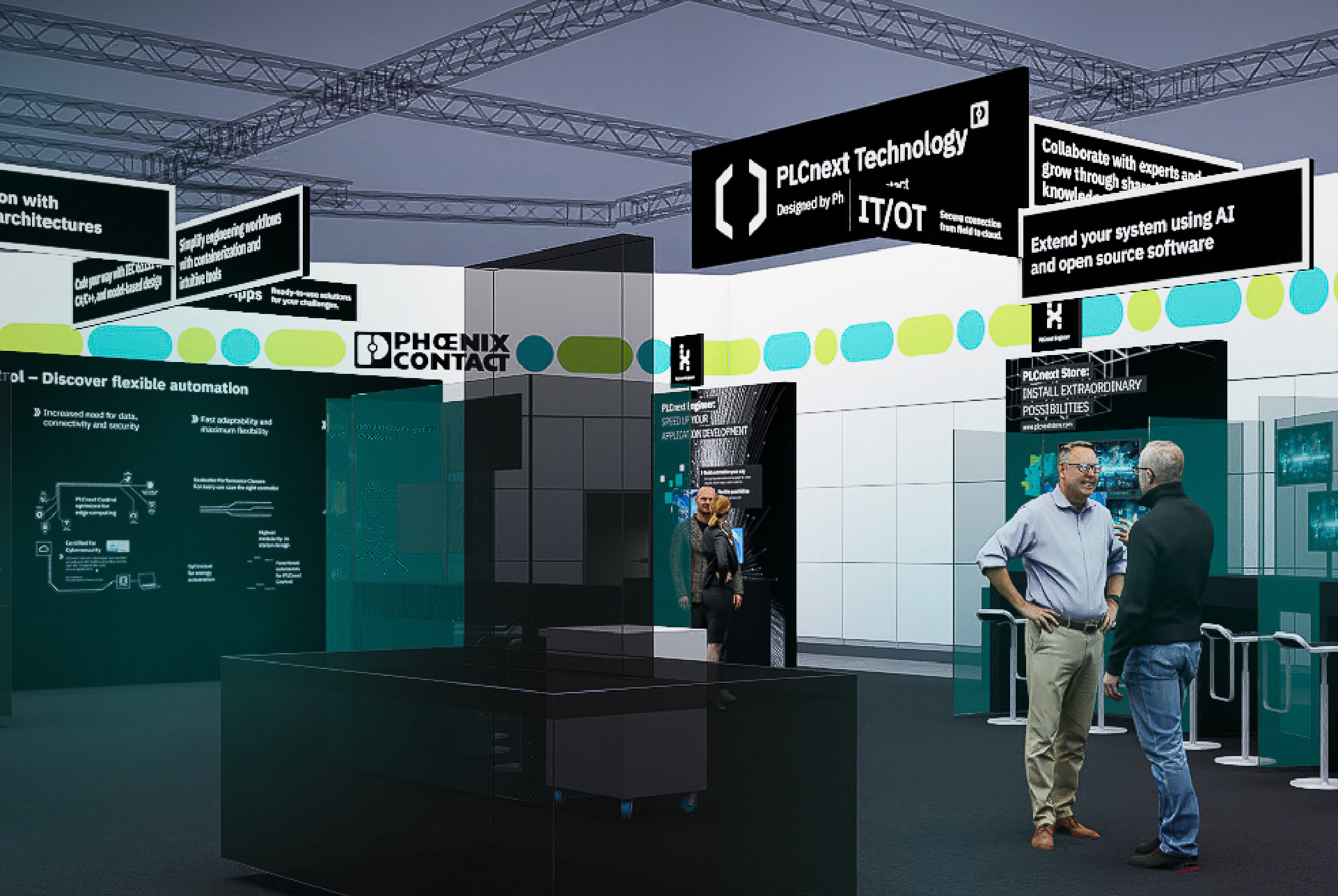
Imagine you are in a cutting-edge factory hall. Around you, machines and robots work meticulously, processing massive amounts of data in real-time and responding immediately to changes in the production environment. The efficiency of these systems heavily relies on the ability to process data quickly and make swift decisions.
This is where edge computing comes into play – a technology that fundamentally changes how we capture, process, and utilize data.
The Future Begins at the Network Edge
Edge computing involves decentralized data processing directly at the location where the data generates, which is at the ‘edge’ of the network. On the other hand, traditional cloud computing processes data in central data centers. As a result, edge computing allows for data processing directly at the source. This leads to a significant reduction in latency and better utilization of network bandwidth.
Technical Advantages That Matter
Reduced Latency:
Decentralized data processing minimizes latency times because it processes data locally instead of sending it to a central cloud. In applications where speed is critical, such as industrial automation or autonomous driving, even milliseconds can make the difference between success and failure. Edge computing enables near-instantaneous data processing and analysis.
Efficient Data Usage:
Local data processing significantly reduces the amount of data transmitted over the network. Instead of sending large volumes of data to the cloud, it processes relevant data directly at the edge. This relieves the network and makes data transmission more efficient.
Enhanced Security:
Edge computing keeps sensitive information local, eliminating the need to send it over the internet. This increases data security and protects against potential cyberattacks. Moreover, on-site data processing better adheres to data protection regulations.
Flexibility and Scalability:
Edge computing systems are highly scalable and flexible, as they can operate independently of each other. Integrating new applications or additional devices seamlessly avoids overloading the entire infrastructure. This allows dynamic adjustments to changing requirements and easy expansion of existing systems.
A Look at the Manufacturing Industry
To better understand how edge computing works and its benefits, let’s look at a practical example from the manufacturing industry. In a connected factory, sensors and IoT devices monitor machine conditions and capture production data in real-time. On-site analysis and processing of this data enable immediate action. For example, it can adjust production speed or perform preventive maintenance on a machine before a breakdown occurs. Edge computing allows quick and efficient data-driven decisions without relying on a central cloud infrastructure.
IT-OT Integration through Edge Computing
On-site analysis and processing of this data enable immediate action. For example, it can adjust production speed or perform preventive maintenance on a machine before a breakdown occurs. These two realms, traditionally separate, must seamlessly collaborate in modern industrial environments. IT-OT integration enables the combination of data from production facilities and operational processes (OT) with corporate information and IT strategies.
The new Edge Device: VL3 UPC 2440 EDGE
PLCnext Technology offers a new robust solution for edge computing applications through the edge device VL3 UPC 2440 EDGE. This device handles large data volumes directly on-site and supports multiple communication protocols. Integration within the PLCnext Ecosystem allows users to connect their edge computing applications seamlessly with other control and automation systems, ensuring consistent and efficient data processing.
The VL3 UPC EDGE device is built to meet the demands of modern industrial environments. It features durable hardware suitable for challenging production conditions and is adaptable to various applications. Its capability to process real-time data contributes to optimizing production processes and enhancing decision-making. Additionally, it includes security features that protect sensitive data and ensure compliance with industry standards.
Integration into the PLCnext Ecosystem facilitates the development and implementation of edge computing solutions by providing a user-friendly platform that supports different programming languages and development environments. This enables engineers and developers to create custom applications tailored to specific needs, thereby improving efficiency and productivity.

Edge Computing as the Key to Modern Industry
Edge computing is a key technology for modern industry, offering numerous technical advantages, including reduced latency times, optimized bandwidth usage, increased security and data protection, and high scalability and flexibility. Decentralized data processing allows companies to increase efficiency and make data-driven decisions faster and more accurately. With the cutting-edge (get the pun? 😉) VL3 UPC EDGE, you can fully leverage the potential of edge computing and elevate your applications to the next level.
Want to dive deeper into edge computing and see what we have to offer? Check out our site and discover all the details: http://phoe.co/edgecomputing



